Keeping a clean tank with carpet plants requires extra effort, specific maintenance procedures, and measures. These measures maximize the lifespan of the tank. The key to a clean carpet planted tank with carpet plants is daily close inspection and proper maintenance routine.
Content Table
This article includes all the post-cleaning tips to maximize the tank’s life.
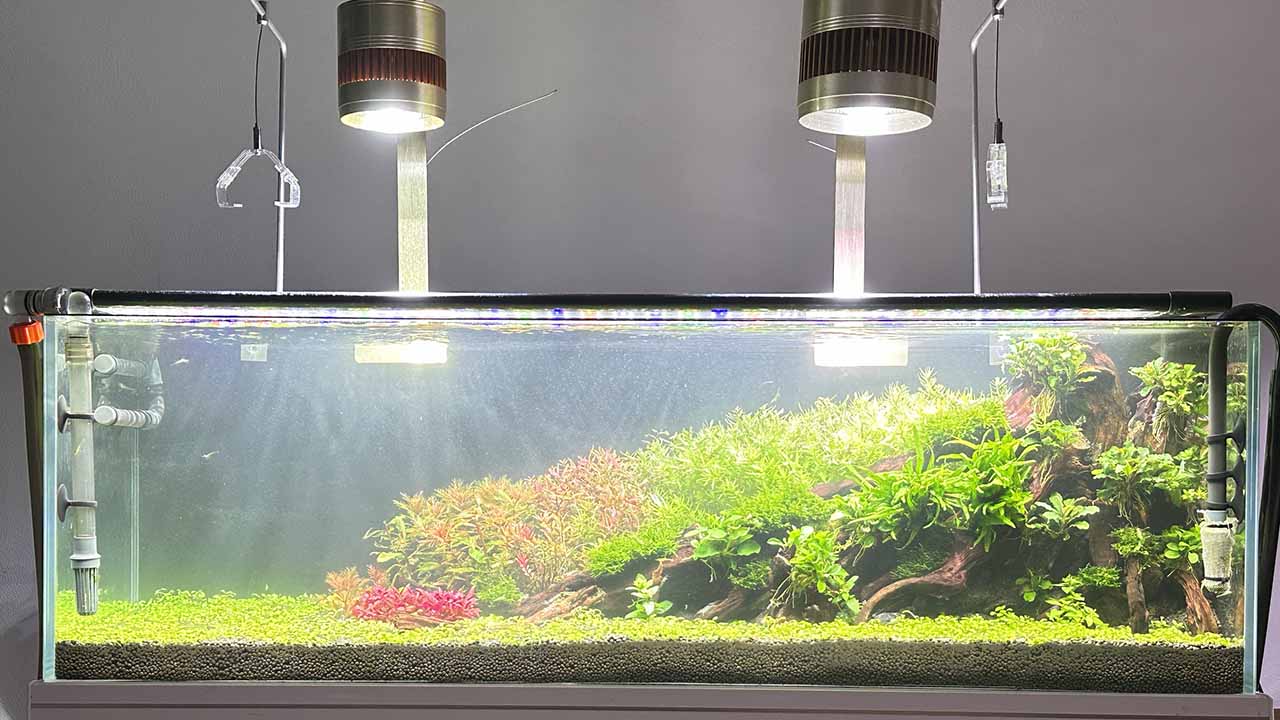
Ensuring Proper Planted Tank Protection
Planted tanks with carpet plants require some extra care daily. The best time for daily maintenance is when you feed your pets in the morning. Daily maintenance will take a few minutes, but maintain your carpet-planted tank in the long run. Here are the daily maintenance aspects.
Flow Rate
Check the flow rate of the water pump. It should be optimal. It helps in the filtration of tank water.
Clean the Glass
Clean the glass daily to make the tank walls crystal clear, especially from near to bottom. It’ll help you to see through the wall clearly and notice any change in the tank. For cleaning the walls, use a glass scraper or soft cloth.
Remove Decayed Leaves
Remove the decayed leaves with a fish net. If they stay there longer, they will cause ammonia spikes and other problems.
Add Water (Top-Off Tanks)
Add deionized water to compensate for the evaporated volume if you have a top-off kit in the tank.
Nutrient Application
Apply the required dosage of liquid fertilizer.
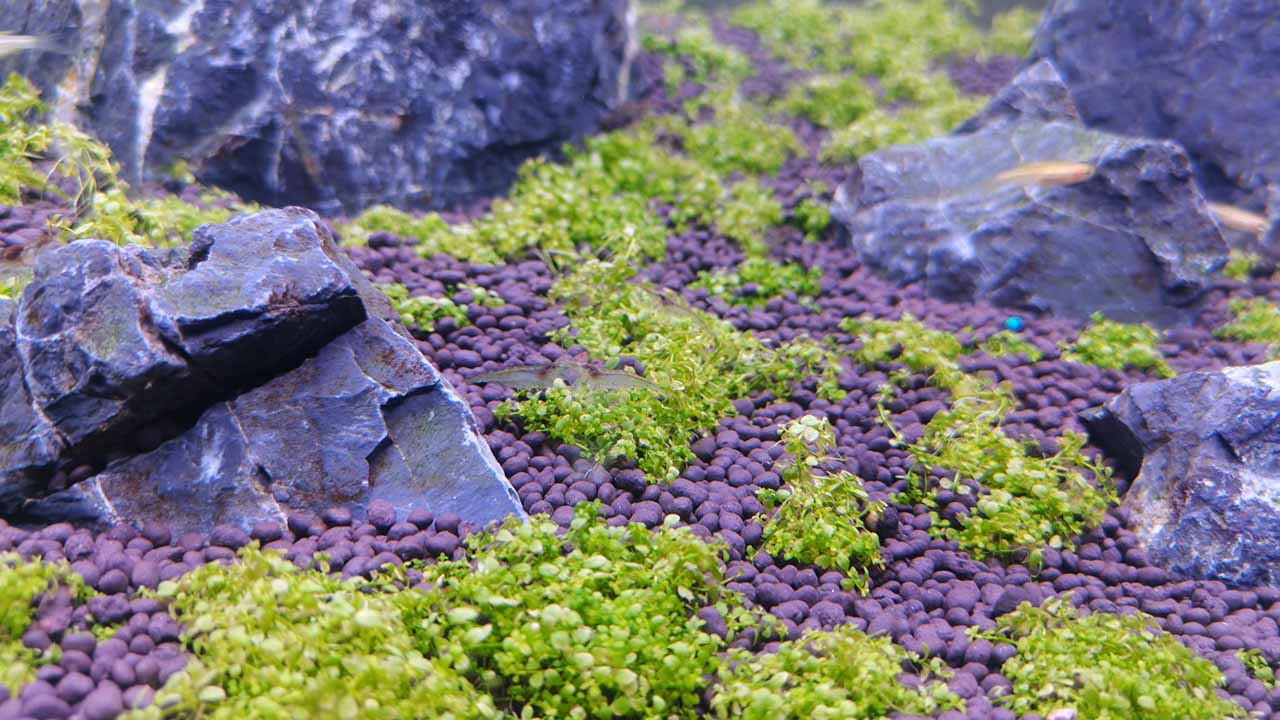
Properly Clean Tank With Carpet Plants
Carpet-planted tanks are often delicate and need extra care to keep them clean. While cleaning, there is always a chance of uprooting and damage. Here are a few tips to clean your carpet planted tanks with care. How to remove algae is mentioned with the specific carpet plants.
Soft Brush
Use a soft-bristle brush to clean the algae in the tank. Do not go too hard while cleaning the algae as it can cause uprooting your plants.
Spot the Cleaning Area
Inspect the tank before thorough cleaning and spot the extra need for cleaning, i.e., a pile of food waste, debris, other organic matter, etc. Use a small siphon and baster combination. Carefully and calmly clean the area. While cleaning, directly point the tools to the cleaning area for precise cleaning.
Proper Trimming
Make a routine for trimming carpet plants. Trim the plants for healthy growth of the carpeted plants. Do the trimming in sections because trimming at once can disrupt the tank.
Tool Kit
It’s wise to use tools for cleaning, although you can do it by hand. Always use sharp and soft tools, i.e., soft-bristled brush and soft-pad. Abrasive tools can cause damage to the carpet plant.
Adequate Water Flow
Maintain a gentle flow through the siphon while cleaning your tank with carpet plants. Strong water currents can uproot the carpet plants. To avoid or minimize disruption, go with a wide nozzle siphon and avoid direct contact with plants.
Different Types of Carpeting Plants
There are various carpeting plants that aquarists commonly grow in the tanks. Each plant has some specific maintenance requirements, which are as follows.
Java Moss
| Java moss is one of the most famous carpeting plants. It has a thin, stringy structure and green color. For cleaning the java moss, remove the algae and debris. You can also control algae growth with an off-and-on spray of 3% hydrogen peroxide solution on the plants. Always use special cleaning tools for it. | 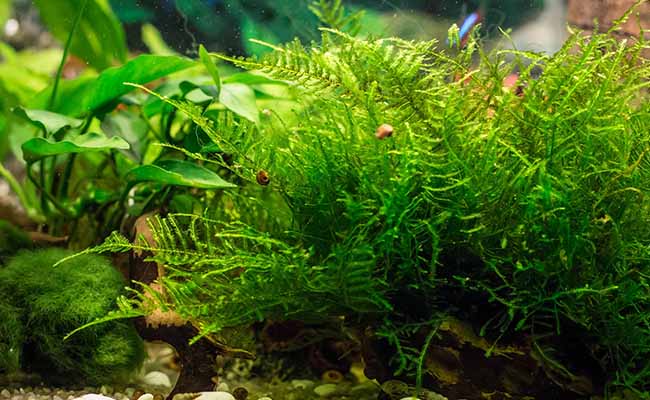 |
Dwarf Baby Tears
| Dwarf Baby Tears is among the famous carpeting plants for tanks. It has small, delicate, and dense foliage leaves. The common issue with this carpeting plant is the outburst of algae.
You can clean your carpet planted tank from algae with a dosage of hydrogen peroxide and introduce the shrimps cleaner in the tank. The rest of the cleaning, you can do with by following the previous tips. |
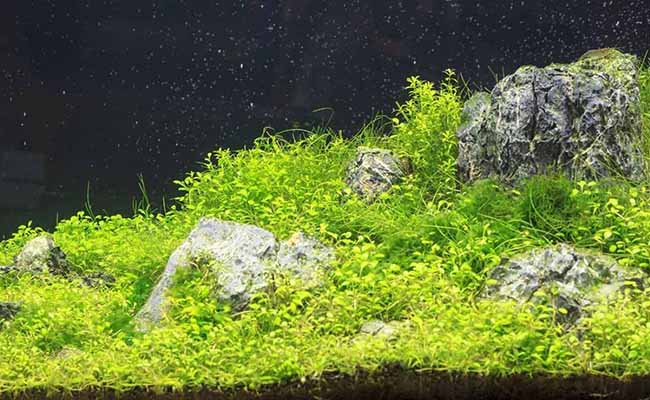 |
Monte Carlo
| Its small, round leaves and dense carpet include it in the famous choices of aquarists. Do regular cleaning with a siphon. But in case of algae bloom, soak the plants in 10% bleach solution not more than 5 minutes. Moreover, you can control it with a spray of 3% hydrogen peroxide. While spraying, be cautious about not spraying on shrimps. | 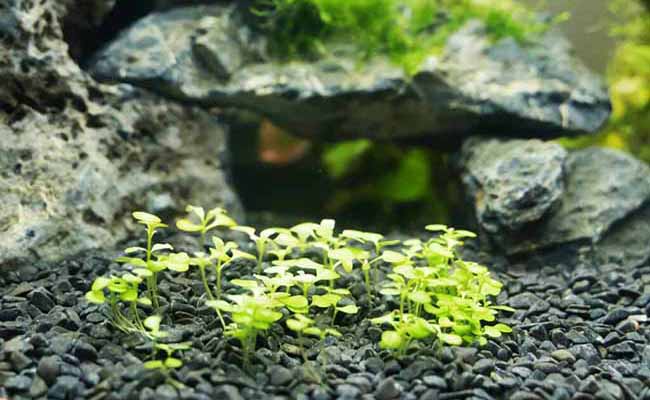 |
Dwarf Hairgrass
| This thin blade of grass creates an astonishing carpet in the tank. Before cleaning, remove the small fish and other small creatures from the tank. Use a siphon or fish tank cleaner to clean it. While cleaning, keep some distance between the plant and the cleaner. Do it with a hassle-free mind. Don’t worry in case of any damage because it can regrow within a week or two. | 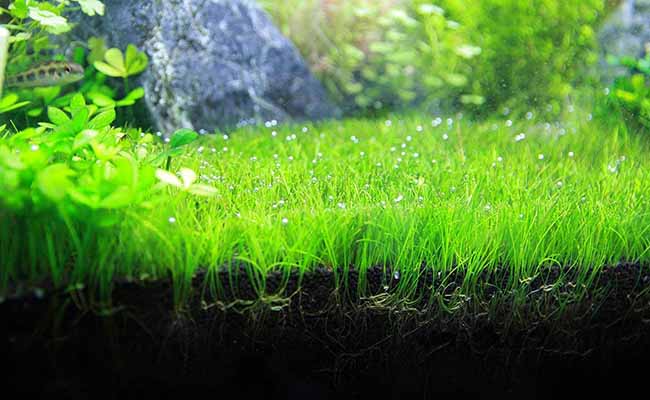 |
Glossostigma
| This small-leafed forms a dense mat at the bottom of the tank. For cleaning this carpet plant, remove algae with a soft brush or soak the plant in a non-iodized salt solution. One tablespoon for one gallon of water to make a non-iodized salt solution. After 10 minutes of soaking, rinse it with water. Do the rest of the cleaning with a combination of siphon cleaners. | 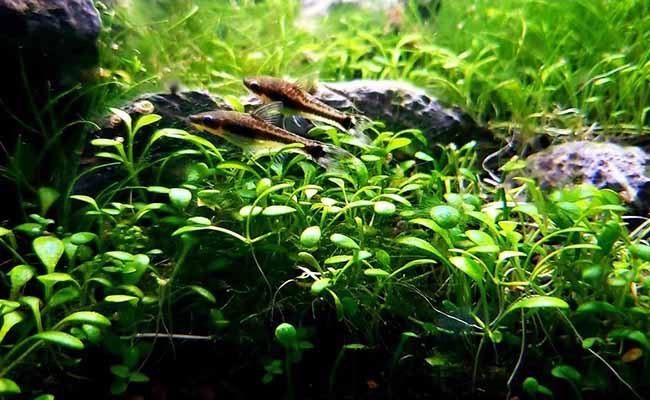 |
Clean Carpet Planted Tank Substrate
It’s better to clean the tank’s substrate each week. A combination of siphon and aquarium cleaner does this job in a better way for you. Moreover, adding shrimps, mini chili crabs, and some specific fish also do carpet cleaning for you. If you change the substrate after every 1 or 2 months, it’ll also be beneficial for your tank and carpet plants.
Maximizing the Lifespan of the Carpet Planted Tank
After cleaning the tank, follow some measures to maximize the lifespan of your carpet plants.
Stable the Water Parameters
Stable the water parameters in the tank, i.e., pH, temperature, hardness, etc. Water parameters directly affect plant lifespan. Therefore, it’s necessary to have a close eye on water parameters. For that, use a water parameter testing kit. In case of any problem, maintain them. Otherwise, this instability can lead to redundant growth, shortened lifespan, and bloom of algae.
Lighting
Light plays a pivotal role in proper plant growth, i.e., helps in photosynthesis. Most of the carpeting plants need moderate to highlight intensity. Provide that intensity. Moreover, the lighting hours are also crucial. Put a timer on the light because extra hours can cause disturbance for fish and algae bloom in the tank.
CO2 Injection
If your plants need high light, or you want to experience some fast growth, then you need to inject a proper dosage of CO2. It’ll help in plant photosynthesis. The dose varies with the plant and plant conditions.
Maintenance Routine
You have control over plant growth parameters. Therefore, you’ll be very clear about the growth rate. Set the maintenance routine according to it. However, veterans said that you should clean your carpeting plants after each week. Plant trimming varies with the type of plant.
Avoid Overstocking
Overstocking is harmful to the overall tank’s health. It increases the nutrient requirement and waste generation in the tank, which leads to an imbalance.
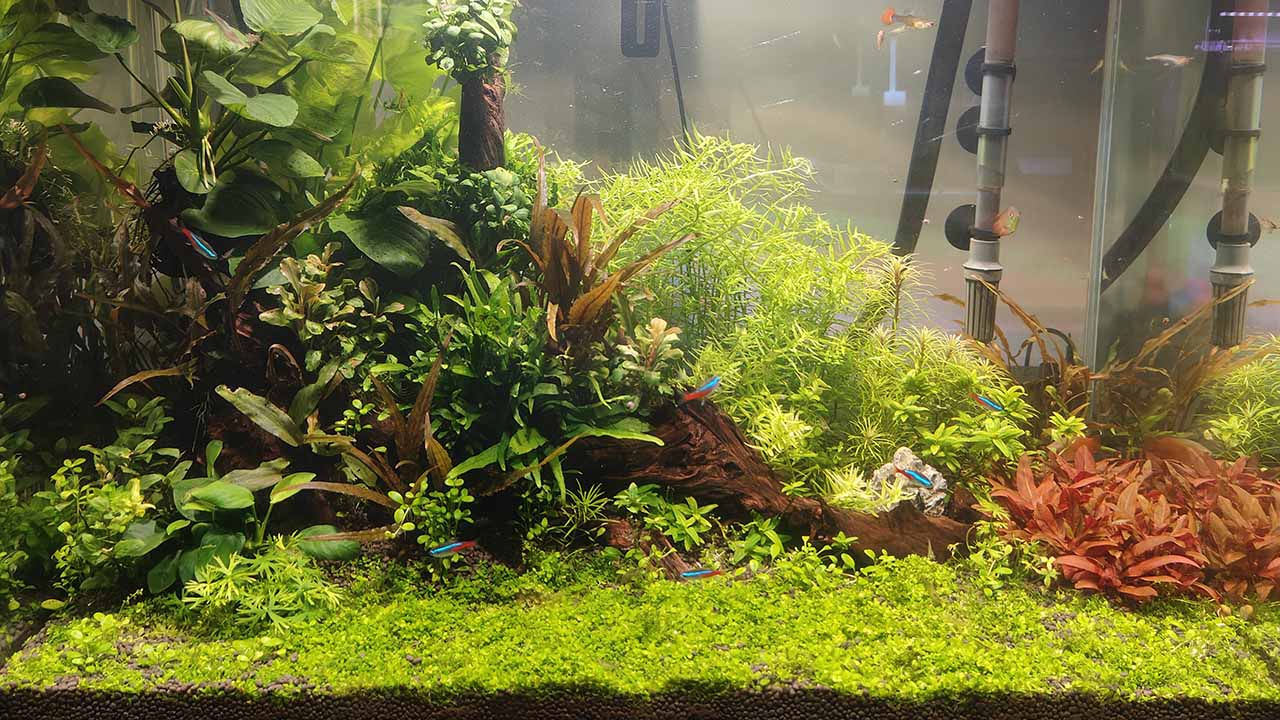
Key Takeaways
- To keep the tank in proper shape, clean the glass wall, maintain adequate flow, and apply liquid nutrients daily. Also, remove the decayed leaves, and add water in case of the top-off tank.
- Spot the cleaning area. Use a cleaning tool kit and a soft bristle brush for cleaning.
- Also, do trimming to keep them in proper shape.
- Soaking the plant in 3% hydrogen peroxide solution and a non-iodized solution for 10–15 minutes helps to control the algae growth.
- Do the cleaning after each week.
- Maintaining water parameters, adjusting lighting, CO2 injection, and proper maintenance schedule maximize the tank’s life.
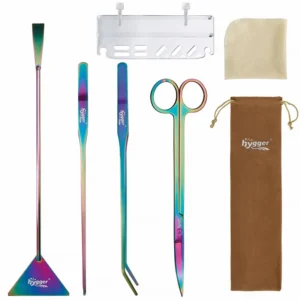
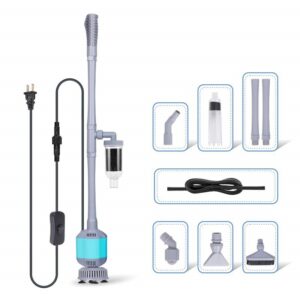
Leave a comment